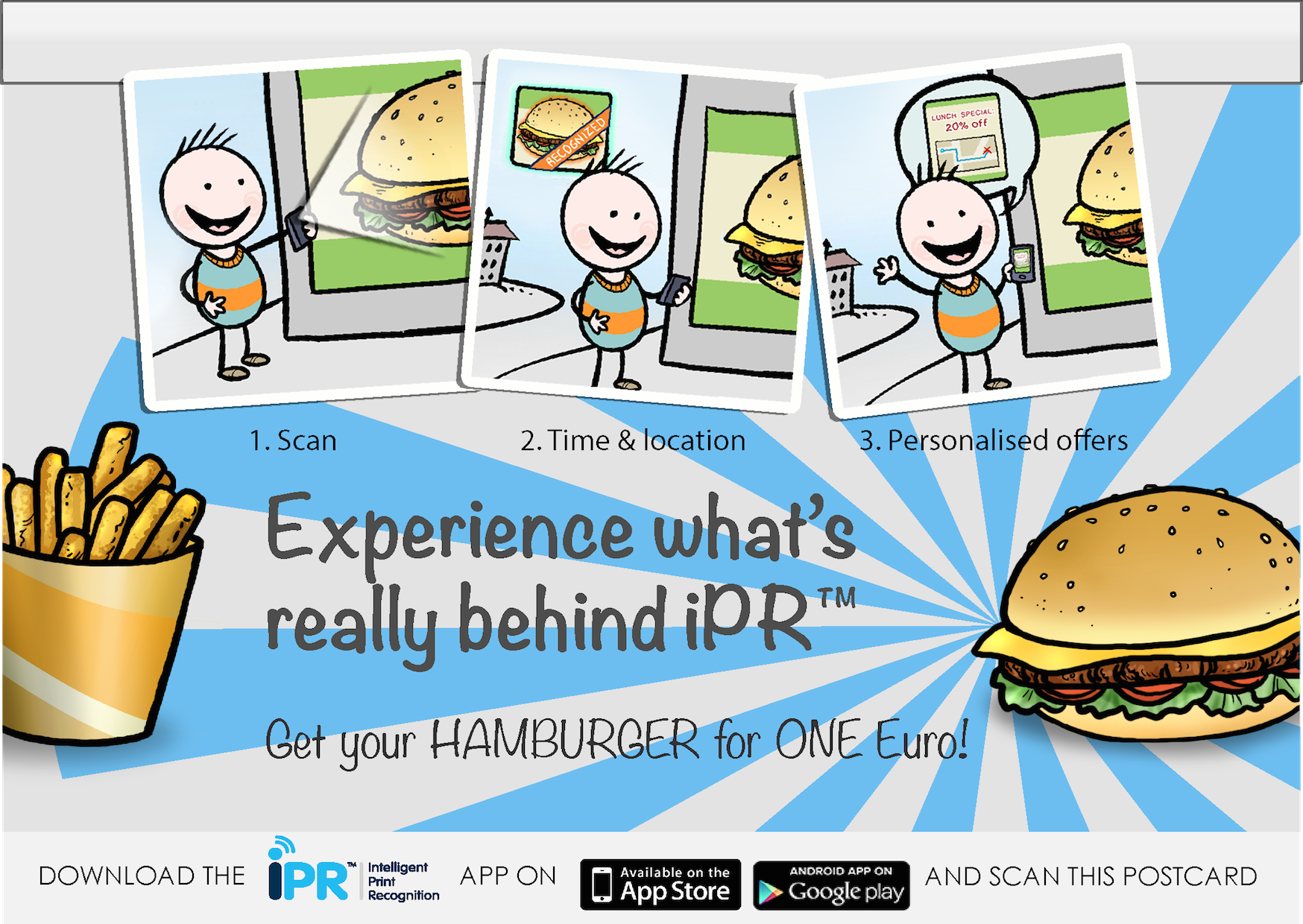Peter Lancaster, CEO of Documobi, sets out the stall for the company’s iPR mobile scanning technology in large-format environments.
You’ve heard the theory - there’s massive opportunity to add considerable value to large-format print by using mobile ‘scanning’ technologies. 77% of UK adults have a smartphone, and they use them all the time. And a typical marketing executive is under 30 years old and a ‘digital native’. Print can now be a part of their mobile, social world and printer providers need to become part of theirs. The message is hardly new, but there’s a mobile scanning technology that is – well, to wide-format at least. iPR (intelligent Print Recognition) from Documobi makes conventional print digital and interactive. Of course, there are other scanning technologies that do that, and over the years they’ve been well documented, but Peter Lancaster, CEO of Documobi, points out that iPR is perhaps a more useful tool than the better known alternatives.
As he says, “it is vitally important to recognise that the ‘scanning’ technology used is irrelevant if the landing destination is of no use to the person when scanning the print. If a user downloads an app and scans, you better be sure the experience is meaningful, timely and worthwhile. Unfortunately, and all too often, a user is led to a desktop website that can barely be read on a mobile device. You can type in a URL more quickly.
“It is also important to understand the differences between the scanning technologies if you are going to become your client’s expert in interactive print.
“For example, QR codes generally don’t work well with large-format print. Often, due to the optics on a phone, the QR code itself would have to be almost as big as the billboard or POS in order for it to scan correctly from even a relatively short distance away. Brands do not want to have an ugly code taking up 50% of the print!
“Alternatively, NFC (Near Field Communications) are thin electronic tags that need to be stuck onto (or laminated into) the print. The user’s phone has to be within 1cm of the tag for it to work, so this rules out the majority of large-format print. NFC doesn’t work with any Apple device either so in marketing terms, it’s a waste of time.
“Digital watermarking requires ‘noise’ to be introduced into an image via a Photoshop plug-in prior to printing. When scanning, the user needs to be between five and seven inches away from the print. However, the larger the piece of POS, the exact distance at which the scanning will work becomes variable and only within a narrow band. This makes it extremely difficult to have a positive user experience.
“Augmented reality solutions can also be distance and handset dependent, meaning that the consumer experience can often be compromised, particularly on the Android platform.
“iPR links print to personalised, mobile marketing campaigns via a brand’s own app. Requiring no codes, tags or markers, iPR collects, analyses and directs user data in real-time to create personalised offers when a customer responds to a call to action and scans the print piece with the brand’s app. It’s a robust solution that works on billboards, posters, vehicle wraps, wallpaper, canvas prints, floor graphics, fabrics, static images on LCD displays, vinyl banners, roller banners, window graphics, wobblers, gondola ends etc.”
What about the app?
Lancaster stresses that the idea of there being a universal scanning app for consumers is great in theory (for the consumer) but, so far at least, not practical - and certainly not desirable from a brand’s point of view. If a brand is going to spend time, effort and money educating the consumer about how and why they should scan print, they want you to be using their app, not some third party app that also works with its competitors.
“Virtually every brand I speak to wants their app in your phone. So the scanning technology should be embedded in the brand’s existing app (or at least in a branded version).
“Scanning print is only one small, but important, part of what a brand app typically does. The iPR Scanner app for example, is only there for use as a demo or pilot test app, prior to the brand using the SDK to incorporate into its own app on the Apple and Google Play stores.
“It must also be remembered that the brand is looking for a single, unified customer experience across every visual brand exposure. iPR embedded in the brand app also allows for press ads, brochures, packaging, direct mail and door drops to be interactive in exactly the same way, in the same app, driven by the same database from the same CRM data. No more silos, no more dead-ends. Richer analytics and greater margins all round.”


